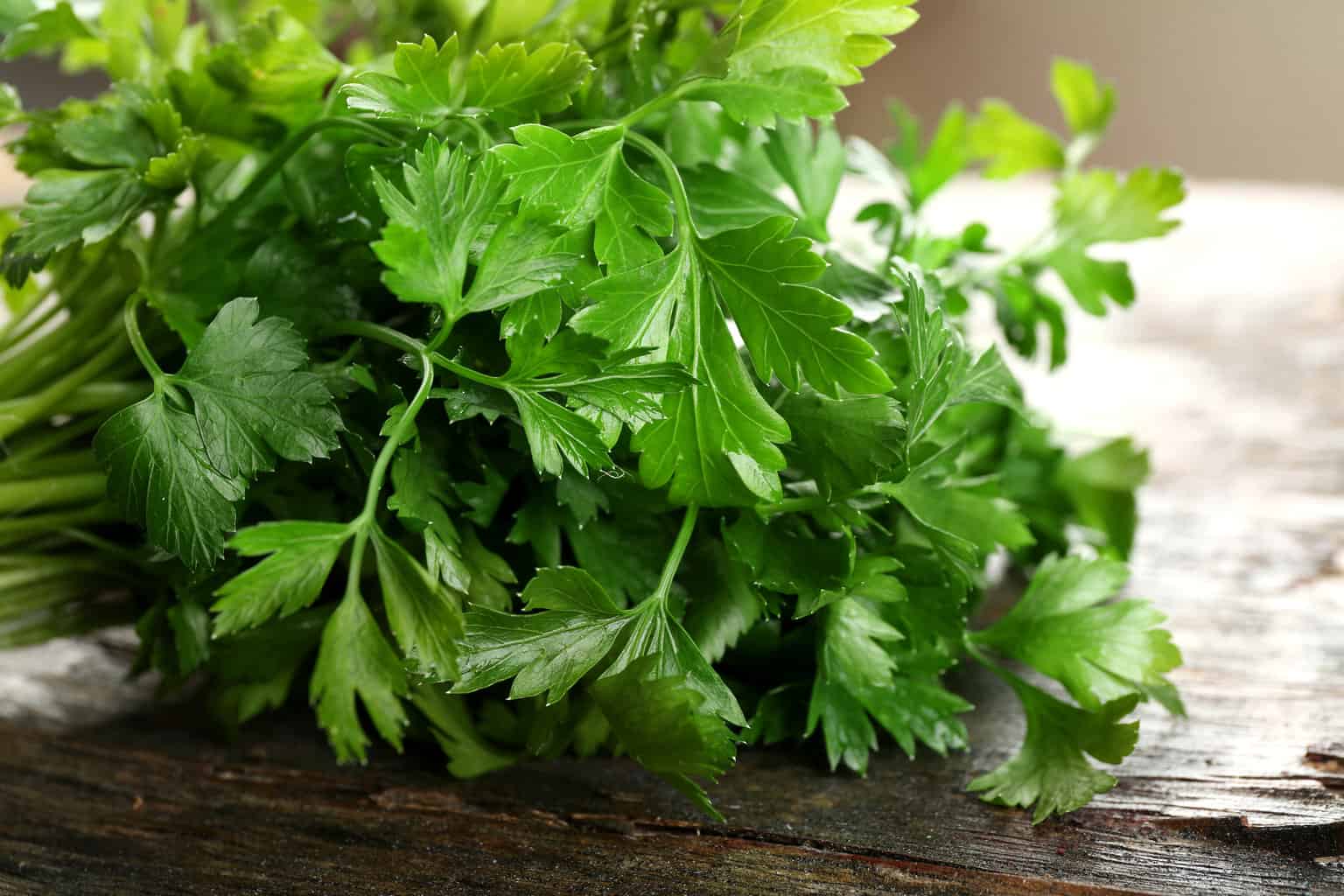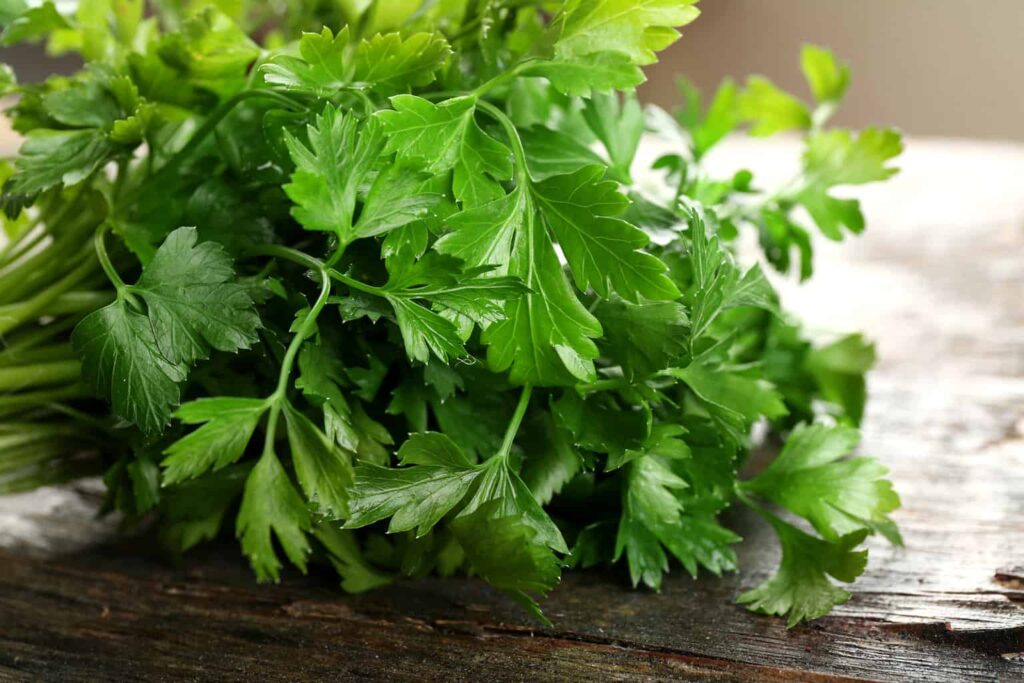Parsley is a herb that many people like to eat. It is very good for us and imparts a delicious flavor when used in various recipes.
It can also be useful in the garden for attracting wildlife and helping with pest control as a companion plant. Now you can add another reason to value parsley to the list – it is also good supplemental food for many birds.
Many wild birds, backyard flocks, and pet birds can and do eat parsley, and it is healthy for them to do so.
Read on to learn more about feeding parsley to birds and why it is a very good idea to grow this herb in a bird-friendly garden.
Can Birds Eat Parsley?
Parsley, Petroselinum crispum, is a well-known pot herb grown in many gardens around the world. It is native to the central and eastern Mediterranean region and naturalized across much of Europe.
When growing this popular culinary herb, gardeners may sometimes find that birds eat young parsley seedlings. These gardeners will attest to the fact that birds do sometimes like to eat parsley.
Those with a backyard chicken flock will also be aware that chickens eat parsley and a wide range of other herbs, and that they can quickly destroy an area of herbs if given access to that part of the garden.
Birds will also often eat parsley when left out on a bird feeder. Pet birds are also sometimes known to enjoy the leaves and stems of this plant.
Regular bird owners mix their parsley with warm water and other dry foods before feeding their birds. Some health food stores sell fresh foods that you can mix with parsley.
How To Stop Birds Eating Parsley in the Garden
If you want the parsley for your own use, birds eating the seedlings can make it difficult to grow your own. Fortunately, it is fairly easy to protect your plants with cloches or row covers to keep them safe from avian visitors.
Parsley is a biennial plant and yet can more or less perennialize in many areas through self-seeding. So once you plant some parsley in your garden, you should be able to enjoy it and harvest from it year after year – if the birds, rabbits, deer, or other wildlife do not get there first!
When you can successfully grow parsley where you live, you should have plenty for your own use and may still have plenty left over to share with the birds and perhaps with other wildlife in your area.
Should You Feed Parsley to Birds?
Parsley poses no threat to birds, and eating some of this herb can benefit many species.
Packed with vitamins and other nutrients, flavonoids, and antioxidants, parsley helps keep us healthy and can help keep birds healthy too.

The Benefits of Feeding Parsley to Birds
Parsley is a source of flavonoids and antioxidants, especially luteolin, apigenin, folate, vitamin K, vitamin C, and vitamin A.
Just like we do, birds need a varied diet and have complex nutritional needs; Parsley is a supplemental food that can help meet some of those needs.
Grow Parsley for Yourself and the Birds
If you would like parsley to feed to birds, either wild birds that visit your garden, a backyard flock, or pet birds, then the best way to obtain it is by growing it yourself.
Of course, parsley is readily available to buy, but growing your own is the best choice financially and for our planet.
Growing parsley in your garden also benefits wild birds as a food source in its own right. When parsley is growing, it attracts a range of beneficial wildlife species, including many insects that are another food source for birds.
Some seed-eating birds will also enjoy eating parsley seeds. This is another reason this is a good plant to provide a natural food source for birds in your garden.
How To Grow Parsley for a Bird-Friendly Garden
Parsley can be grown from seed, either started inside in early spring or sown directly where it is to grow once the weather has warmed where you live.
It will grow best in moist, well-drained soil in full sun when temperatures are between 72 and 86 degrees F.
If you want to grow parsley, one of the first decisions is which type and cultivar to grow. There are two main leaf parsley types–curly and flat leaf parsley. The latter is slightly easier to cultivate and more tolerant of sun and rain.
When growing parsley from seed, germination can be slow and patchy. If you prefer to avoid this stage, you can purchase parsley in pots from the store.
Just note that parsley from supermarkets is a collection of small plants placed together in one pot. These must be separated into their own individual pots as quickly as possible for the best chance of growing them successfully.
How To Feed Parsley to Birds
Leave Some Out for Wild Birds
If you would like to feed fresh parsley to birds, this can be as simple as placing some chopped parsley on a bird feeding table or at another feeding station.
Leftovers with parsley are perfectly fine to leave out for the birds, as long as they are not heavily salted and do not contain onions or any other problem ingredients.
Add It to the Regular Feed of Chickens or Pet Birds
Adding fresh parsley, finely chopped, to the regular feed of chickens or pet birds in your home can allow you to provide them with the beneficial nutrition parsley contains and keep them healthy.
Just make sure that you do not offer long stems, as this can be a choking hazard or lead to crop problems. Chop this herb before you offer it to your birds, either on its own or mixed with their regular feeds.
Can Birds Eat Dried Parsley?
Dried parsley certainly won’t do birds any harm. And drying parsley is a good way to preserve it for the colder months.
But drying reduces the nutritional quality of this herb, so eating fresh, or serving this herb fresh to birds, will always bring more benefits.

